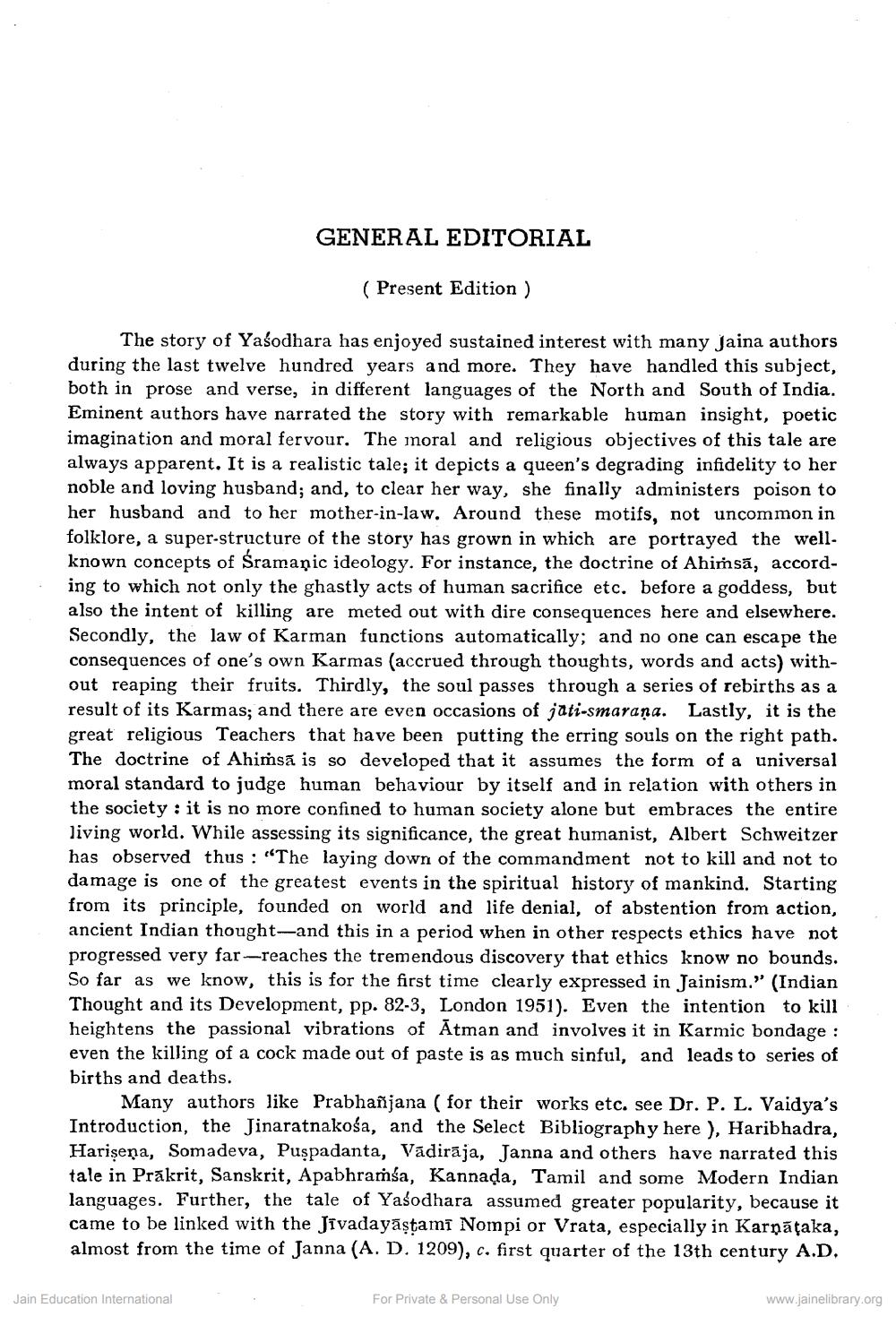________________
GENERAL EDITORIAL
(Present Edition)
The story of Yasodhara has enjoyed sustained interest with many Jaina authors during the last twelve hundred years and more. They have handled this subject, both in prose and verse, in different languages of the North and South of India. Eminent authors have narrated the story with remarkable human insight, poetic imagination and moral fervour. The moral and religious objectives of this tale are always apparent. It is a realistic tale; it depicts a queen's degrading infidelity to her noble and loving husband; and, to clear her way, she finally administers poison to her husband and to her mother-in-law. Around these motifs, not uncommon in folklore, a super-structure of the story has grown in which are portrayed the wellknown concepts of Śramanic ideology. For instance, the doctrine of Ahimsă, according to which not only the ghastly acts of human sacrifice etc. before a goddess, but also the intent of killing are meted out with dire consequences here and elsewhere. Secondly, the law of Karman functions automatically; and no one can escape the consequences of one's own Karmas (accrued through thoughts, words and acts) without reaping their fruits. Thirdly, the soul passes through a series of rebirths as a result of its Karmas; and there are even occasions of jati-smarana. Lastly, it is the great religious Teachers that have been putting the erring souls on the right path. The doctrine of Ahimsa is so developed that it assumes the form of a universal moral standard to judge human behaviour by itself and in relation with others in the society it is no more confined to human society alone but embraces the entire living world. While assessing its significance, the great humanist, Albert Schweitzer has observed thus: "The laying down of the commandment not to kill and not to damage is one of the greatest events in the spiritual history of mankind. Starting from its principle, founded on world and life denial, of abstention from action, ancient Indian thought-and this in a period when in other respects ethics have not progressed very far-reaches the tremendous discovery that ethics know no bounds. So far as we know, this is for the first time clearly expressed in Jainism." (Indian Thought and its Development, pp. 82-3, London 1951). Even the intention to kill heightens the passional vibrations of Atman and involves it in Karmic bondage : even the killing of a cock made out of paste is as much sinful, and leads to series of births and deaths.
Many authors like Prabhañjana (for their works etc. see Dr. P. L. Vaidya's Introduction, the Jinaratnakośa, and the Select Bibliography here ), Haribhadra, Hariṣena, Somadeva, Puspadanta, Vadirāja, Janna and others have narrated this tale in Prakrit, Sanskrit, Apabhramśa, Kannada, Tamil and some Modern Indian languages. Further, the tale of Yasodhara assumed greater popularity, because it came to be linked with the Jivadayāṣṭami Nompi or Vrata, especially in Karnataka, almost from the time of Janna (A. D. 1209), c. first quarter of the 13th century A.D.
Jain Education International
For Private & Personal Use Only
www.jainelibrary.org




